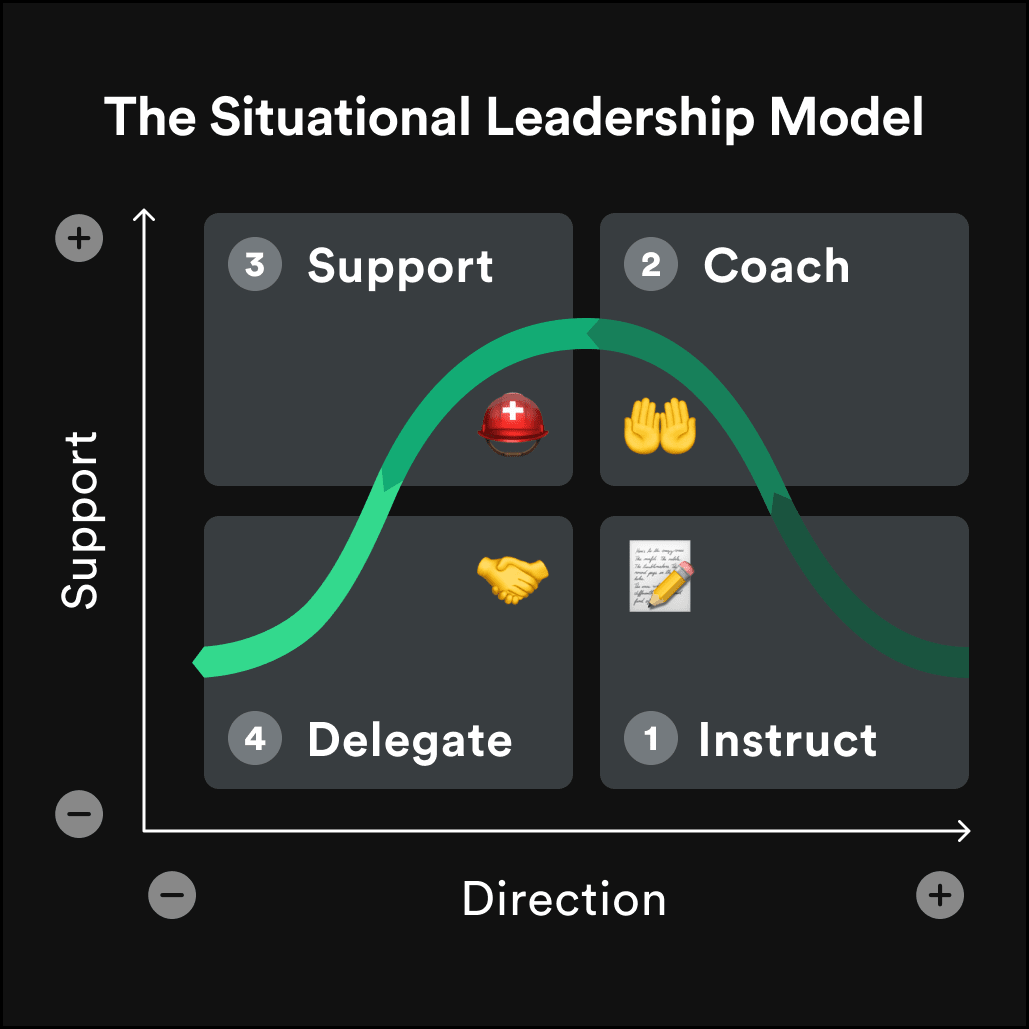Give the Right Level of Support for Your Team
Provide direction without micromanaging and autonomy without neglecting.

Inspired by:
Paul Hersey & Ken Blanchard - Creators of the Situational Leadership Model

When you’re managing someone, it can be hard to strike the right balance. Sometimes, you’re giving too much direction and it’s verging on micromanagement or you don’t give enough support and your team feels neglected.
There’s no one size fits all approach. To be a truly effective leader, you need to adapt to different styles. Luckily, Paul Hersey and Ken Blanchard developed the Situational Leadership Model for just this challenge.
It’s made up of 4 stages:
- Instruct 📝
- Coach 🤲
- Support ⛑
- Delegate 🤝
Let’s take a look!
1. Instruct 📝
When their commitment is high, but expertise low, give instructions.
Give clear direction on what to do, how to do it, and when it needs to be completed.
This is useful for when your team member is starting a new job, new role, or going outside of their comfort zone.
“This is how I’ve done it previously, for the time being, please do the same.”
2. Coach 🤲
When coaching, engage in an open dialogue and put more emphasis on listening.
This is useful for when your team member is stressed, or the initial high from the new job is starting to fade...
...they’re developing but their mood is dwindling. Ask questions to help your team member find the answers themselves:
• What are you struggling with most? • What makes it challenging? • What have you tried? • What haven’t you tried yet?
3. Support ⛑
This is a collaborative approach that encourages more participation.
It's useful when your team member is confident in their abilities but at risk of losing interest.
Here are some ideas when dealing with a skilled team member whose motivation is hard to predict:
⬇️ On a low? Ask them: “What would make you feel more excited and committed?”
⬆️ On a high? Tease out their ideas or co-create a process: “How would you do it?”
4. Delegate 🤝
In this area, you’re taking a backseat, giving full trust, and letting your team members shine.
It works well when they want more autonomy and are eager to keep growing...
This is typically when they’ve become a real expert and they’re highly motivated. Living the dream!
Explore giving new responsibilities or even a team of their own.
“You’re doing a great job! Feel free to use me as a sparring partner, but I trust you to own this now!”
And that's all 4! 🏁
In your 1-on-1s, ask your team for feedback about whether you’re giving the right level of support.
Keep adjusting based on what they need and what you think will help them perform and grow! 🌱
